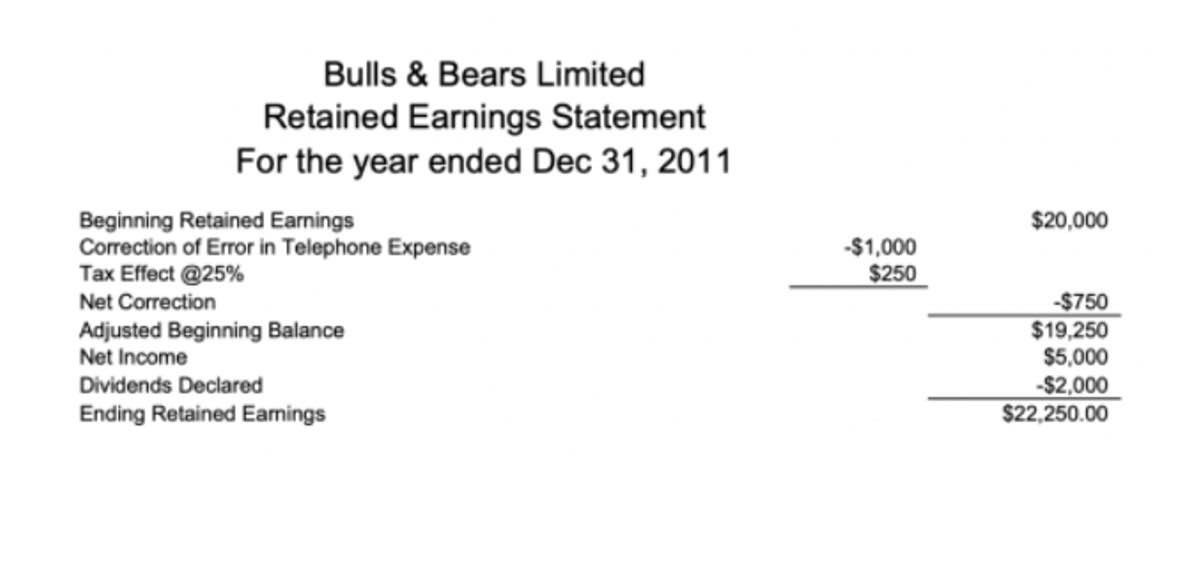
Similarly, details on any stock repurchases, also known as treasury stock acquisitions, are necessary. This includes the number of shares bought back and the cost incurred, which will increase the treasury stock account. The closing balance of the retained earnings is added to the equity section of the balance sheet. This is why you need to calculate retained earnings when building a three-statement model, even though you don’t necessarily need to model the entire statement separately. For example, any common stock you buy back during the year should be deducted from the earnings.
Components of changes in shareholders equity
Many investors view companies with negative shareholder equity as risky or unsafe investments. But shareholder equity alone is not a definitive indicator of a company’s financial health. If used in conjunction with other tools and metrics, an investor can accurately analyze the health of an organization.
What is preferred stock?
- The negative amount may lead to the question “Was there a decline in the demand for the corporation’s products?
- Statement of stockholders’ equity is a statement showing the movement of all components of the equity.
- Retained Earnings (RE) are business’ profits that are not distributed as dividends to stockholders (shareholders) but instead are allocated for investment back into the business.
- Conversely, a lack of dividends despite profitability indicates a focus on internal funding for growth initiatives.
- It is because they have a higher claim on assets than common shareholders and a bit beneficial as they almost guarantee that they will be paid fixed dividends.
- In 2021, the share repurchases are assumed to be $5,000, which will be subtracted from the beginning balance.
As a result the $9,000 decrease in accounts payable will appear in parentheses on the SCF. Under the accrual method of accounting, revenues are reported on the income statement in the accounting period in which they are earned (and there is a reasonable assurance that the amounts will be collected). The revenues (and the related assets) are likely captured at the time that the sales invoice is prepared. At the end of the accounting period, accountants will also prepare adjusting entries for revenues that were earned but were not yet fully processed through the accounting system.
What are the main components of stockholders’ equity?

Next, the “Retained Earnings” are the accumulated net profits (i.e. the “bottom line”) that the company holds onto as opposed to paying dividends to shareholders. Still, shareholder equity alone is not a definitive statement of stockholders equity formula indicator of a company’s well-being. It should be used in conjunction with other tools and metrics to analyze a company’s financial health. Stockholders’ equity is a measurement of the general financial health of the company.
- Return on equity is a measure that analysts use to determine how effectively a company uses equity to generate a profit.
- If you take the example of Business A, which has total assets of $2.5 million and liabilities of $900,000, this will give you a shareholder equity value of $1.6 million.
- It reflects the net worth of a business and is reported on the balance sheet under the equity section.
- “It tells shareholders the direct financial impact of the business’s operations and policies on their ownership stake and how their claim of the company’s value has changed,” Pack added.
Statement of Retained Earnings is One Piece of the Puzzle
The number of shares authorized is the total number of shares that the corporation may issue under the articles of incorporation of the business. The phrase “number of shares issued” refers to the total number of shares that the corporation has issued which may or may not be owned by outside investors. In fact, these two categories are so important that the Statement of Changes in Equity is divided into share capital and retained earnings. Now that we know how important this distinction between cash received from shareholders and earnings on these contributions, let’s back up and discuss the Statement of Changes in Equity. The starting point for calculating the ending stockholders’ equity is to know what the stockholders’ equity was at the beginning of the period.

Share This Book

Normally, the investors and firms decide to reuse this amount and reinvest the same in the company. Shareholders’ equity is the residual interest of the shareholders in the company they invest in. It includes not only the initially invested amount but also the returns on it, along with the reinvestments they make since the company’s Remote Bookkeeping inception. The reinvestment from the shareholders indicates their attitude towards the company, which is positive if the performance is good and as expected.
From understanding the applicable rates, to choosing the right regime and reporting, we cover everything you need to navigate the world of VAT with confidence. Find out how this alternative financing method works, with its many advantages. Founder shares or class A shares have more voting rights than for instance the other class of shares. Book value of equity (BVE) and Market value of equity (MVE) are two important metrics used to assess a company’s value, but they approach this valuation from different perspectives. Conversely, a lower ratio implies higher reliance on debt financing, which can increase financial risk. Next, we’re going to go over the components of the second formula (Common Shares + Preferred Shares + Paid-In Capital + Retained Earnings).
How to Prepare a Retained Earnings Statement
The financial statements that are distributed by a U.S. corporation must comply with the common https://www.bookstime.com/ rules known as generally accepted accounting principles or GAAP or US GAAP. If the corporation’s stock is traded on a stock exchange, the corporation is also required to comply with the reporting requirements of the Securities and Exchange Commission (SEC), an agency of the U.S. government. If it’s in the black, then the company’s assets are more than its liabilities.